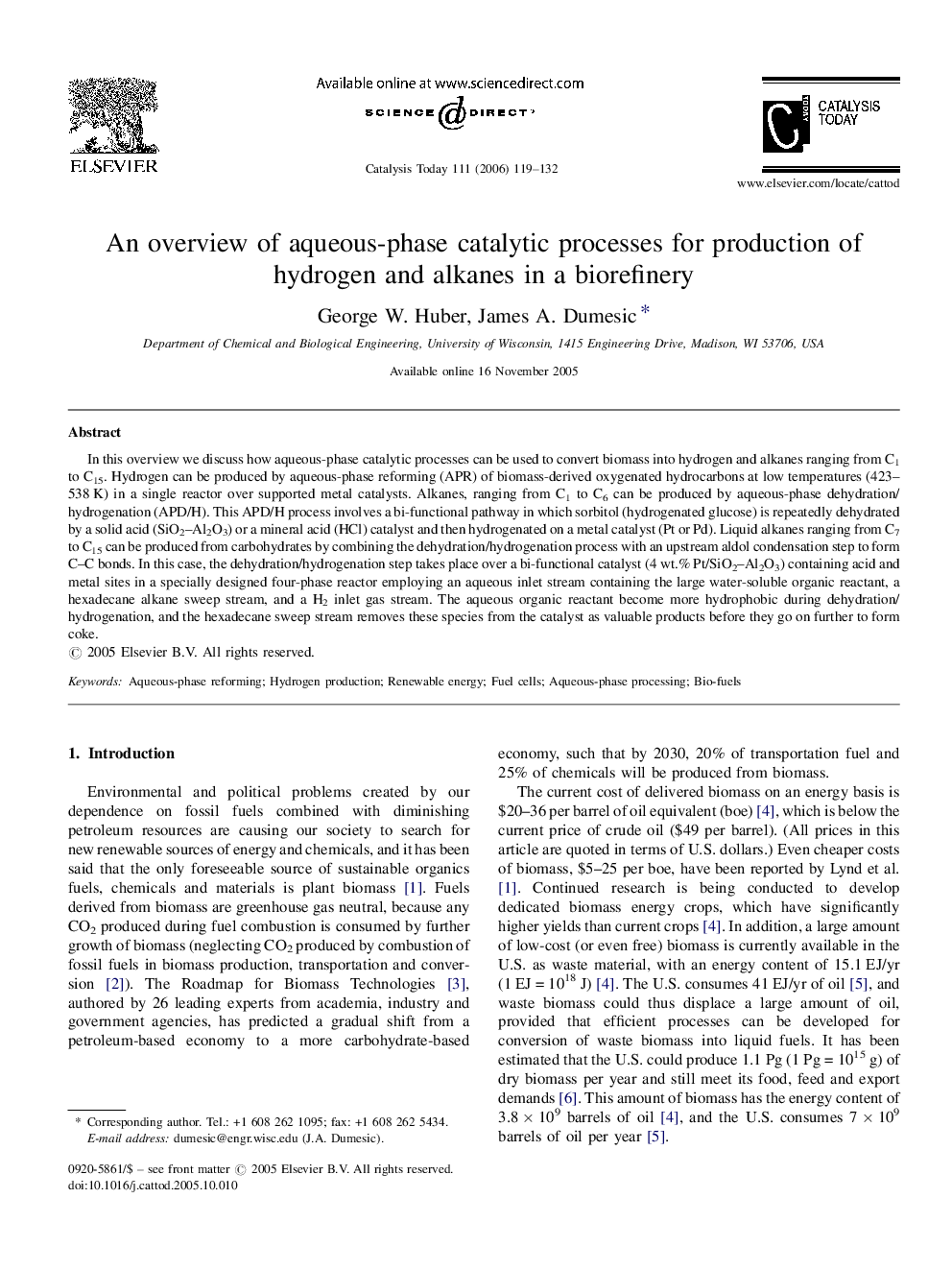| Article ID | Journal | Published Year | Pages | File Type |
|---|---|---|---|---|
| 58366 | Catalysis Today | 2006 | 14 Pages |
In this overview we discuss how aqueous-phase catalytic processes can be used to convert biomass into hydrogen and alkanes ranging from C1 to C15. Hydrogen can be produced by aqueous-phase reforming (APR) of biomass-derived oxygenated hydrocarbons at low temperatures (423–538 K) in a single reactor over supported metal catalysts. Alkanes, ranging from C1 to C6 can be produced by aqueous-phase dehydration/hydrogenation (APD/H). This APD/H process involves a bi-functional pathway in which sorbitol (hydrogenated glucose) is repeatedly dehydrated by a solid acid (SiO2–Al2O3) or a mineral acid (HCl) catalyst and then hydrogenated on a metal catalyst (Pt or Pd). Liquid alkanes ranging from C7 to C15 can be produced from carbohydrates by combining the dehydration/hydrogenation process with an upstream aldol condensation step to form C–C bonds. In this case, the dehydration/hydrogenation step takes place over a bi-functional catalyst (4 wt.% Pt/SiO2–Al2O3) containing acid and metal sites in a specially designed four-phase reactor employing an aqueous inlet stream containing the large water-soluble organic reactant, a hexadecane alkane sweep stream, and a H2 inlet gas stream. The aqueous organic reactant become more hydrophobic during dehydration/hydrogenation, and the hexadecane sweep stream removes these species from the catalyst as valuable products before they go on further to form coke.
